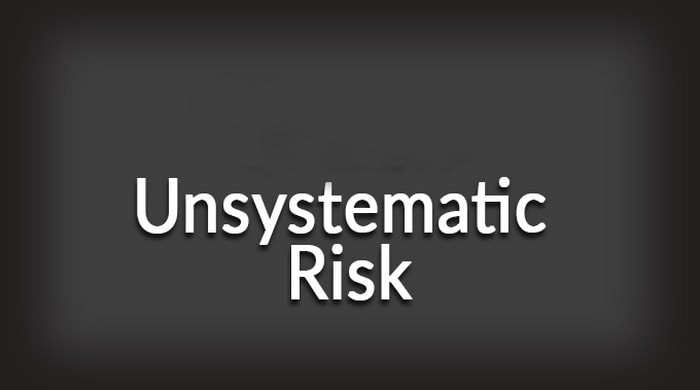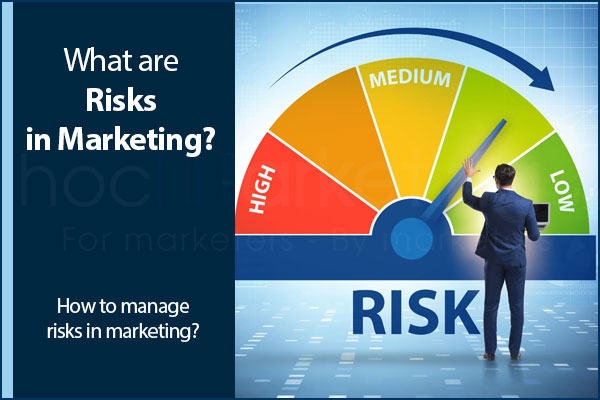
Unsystematic Risk: Types, Factors & Examples Explained

Unsystematic risk refers to company-specific risks that can be diversified by investing in a range of assets This type of risk is affected by factors such as management decisions, industry competition, and financial health Types of unsystematic risk include business and financial risk, and examples may include supply chain disruptions and product recalls
Investors often encounter diversifiable risk factors when investing in a company. This type of risk is specific to factors such as the company itself, the country, economy, market, and industry, and is known as unsystematic risk. Unlike systematic risk, which is caused by uncontrollable external factors, unsystematic risk can be partly mitigated through management solutions like asset diversification and allocation.
Meaning of unsystematic risk
Unsystematic risk is the impact of micro-economic factors on a company, leading to fluctuations in returns. This type of risk is characterized by the uncertainty surrounding a particular industry or company investment.
A potential threat to a company's success could arise from various sources, such as a new competitor that poses a significant challenge and threatens to capture a significant portion of the market share, a regulatory change that could result in reduced sales or a recall of a particular product line, or a change in management. Poor decision-making and lack of entrepreneurship can lead to significant losses for a company, which is known as unsystematic risk because it only affects a small portion of the majority at a given time.
The presence of unsystematic risk is present in every type of industry; it is up to the specific company to try and implement methods that can reduce it to low levels.
Types of unsystematic risk
Unsystematic risk can be divided into two types-
1) Unsystematic Business Risk
External and internal issues within a company can lead to unsystematic risk, which poses a threat to a company's profitability and success. These risks can stem from a variety of factors such as legal, political, social, and economic influences. To mitigate such risks, it is crucial for businesses to have a risk management strategy in place. This includes considering regulations, economic and political policies, consumer preferences, competition, input costs, overall economic conditions, and other factors that may impact a company's financial goals or targets. By proactively addressing potential risks, companies can better protect themselves and position themselves for long-term success.
Every business has to deal with its internal and external risk factors by itself as they are company-specific and not industry related.
2) Business Accounting Financial Risk Analysis
Financial risk is a critical factor that affects individuals, businesses, and governments alike. It stems from the possibility of stakeholders losing their investment, and is closely tied to an organization's capital structure. The way a company secures funding for its growth directly impacts future earnings and the overall stability of the business. Inadequate capital can pose a significant threat, leading to unpredictable revenue streams. Financial risk encompasses operational, liquidity, country, currency, and credit risks, making it a multifaceted and complex challenge to manage.
One type of operational risk that businesses face is the possibility of errors or unforeseen events occurring during the production process, or the risk of a security breach. Another type of risk, known as strategic risk, can arise when a company operates in an industry that is in decline or when it enters into partnerships that ultimately lead to diminished future growth. Additionally, regulatory risk is a concern for businesses as it can result in potential legal action and liabilities.
Analysis of Factors affecting the unsystematic risk
It is nearly impossible to anticipate and predict the source of any type of unsystematics risk or about how and when it is going to occur.
To prevent labor strikes, unrest, and the production of unwanted products, a company must avoid internal factors that pose risks. The key to eliminating unsystematic risk is through portfolio diversification. A company should invest in multiple assets to minimize the impact of market events. This includes owning stocks and securities in a range of assets that are less susceptible to singular events.
AB Company's investment strategy proved to be advantageous during a sudden event that caused a significant strike and unrest in the Pharma industry. While the company owned stocks in this industry, its portfolio was diversified enough to include investments in the transportation industry. As a result, the loss incurred in the Pharma industry was offset by gains in the transportation industry.
At times even diversified assets fail to escape all types of risk but it is better than being subjected to full-risk from investing in a specific company.
Examples
If an entrepreneur makes a miscalculation or judgment error, it can lead to unsystematic risk. A prime example of this is ABC Company, which specializes in producing pencil batteries.
The organization had conducted market research which indicated a shift in consumer demand towards A+ size batteries over pencil batteries in the coming year. Based on this information, the company made the decision to shift their focus to manufacturing A+ size batteries instead of their previous product line. However, the following year the company experienced a setback as they realized that this decision had been a miscalculation. As a result, the machinery and inventory they had obtained for the new product line had to be sold at a loss or left unused for the time being.
However, it was soon discovered that there was a technical glitch in the product, which led to a recall. This resulted in a severe financial crisis for the company, despite the growth pattern of the rest of the companies in the sector. It's important to note that this was an isolated incident and did not affect the sector as a whole.
However, when a new competitor entered the market offering a similar product at a lower price, BC Cleaning Products began to experience a decline in sales. In addition, some customers complained about the quality of their product, which further damaged the company's reputation. The company had to come up with a new strategy to maintain its market share and customer loyalty.
XY Company emerged as a formidable competitor, offering a product with comparable features that resonated with the target customer base. The impact was significant, causing BC Cleaning Products to suffer a substantial market share loss and exposing the company to an unsystematic risk. Another potential unsystematic risk could arise from a labor dispute, where terminating an employee who has a strong relationship with the union could result in walkouts by other employees, as directed by their union.
The onus is on the company to resolve its internal issues and mitigate unsystematic risk, which can potentially lead to financial losses. We hope you found our article on risk analysis informative.














